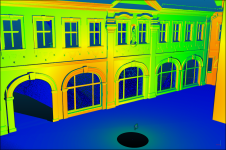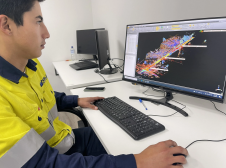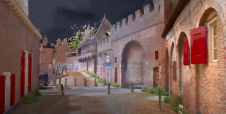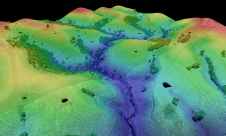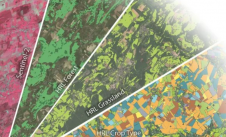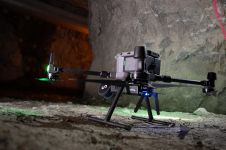高分辨率现场调查
Méta:匈牙利的多归属植被数据库
传统植被映射面临新的挑战:更大的调查区域,新的栖息地类别,用于植被的不协调或降级,生态属性数量增加和新的方法标准。匈牙利Méta基于野外植被映射项目与三级空间数据库的挑战升起。
生态系统和生物群体体验许多问题:过度划分,生物多样性丧失和气候变化。为了解决这些,传统的植被科学正在恢复重要性。例如,在欧洲的基于领域的高分辨率植被映射,在西班牙和捷克共和国进行了大面积,受到欧洲Natura 2000计划的动机。欧盟还通过解释卫星图像来建立普林斯覆盖计划,以通过解释卫星图像来映射大型景观。虽然对植物学家来说非常有用,但即使是最近的卫星图像也表现出映射栖息地质量和多样性的局限性,最严重的缺陷是将太多栖息地类型分组到一个广泛的陆地覆盖类中。陆地覆盖图也不提供有关景观和植被的质量,自然,功能和生物多样性的信息,可以通过现场专家观察到的功能。表1突出了传统映射,葡萄园和Méta的主要特点。
Méta的目标
在Méta(景观生态植被映射)项目中,共有225名植物学院在该领域花费了七千天,以生产约360,000次栖息地记录匈牙利面积的90%以上(超过83,000km2)。Méta的目标是:(1)将匈牙利的(半)自然植被映射(2)评估自然保护目的的自然植被遗产,(3)在栖息地多样性方面评估当前景观状态,土地利用与生态,(4)获取未来变革预后的数据。Méta将作为绘制,分析和建设全国范围和区域一级的基础。要存储和轻松地分析所有数据,已经介绍了基于网格的空间分辨率,栖息地和属性和映射方法的新标准。
Triple Spatial Level
Méta数据库是在Microsoft SQL 2000 Server环境中实现和开发的,该环境在英特尔Xeon架构上运行。软件是在ArcView Avenue和Microsoft Net环境中开发的。使用ArcView 3.3和ArcGIS 9.0(ESRI)创建系统嵌套网格。三个空间水平是:
1.Quadrants, size 35km2,总共2,834,存储外来物种和连接等数据
2.Hexagons, size 0.35 km2,每个象限中的一百个,存放诸如潜在植被,“旧领域”,土地利用和再生潜力的数据
3.Habitats, two to four (semi-) natural types in each hexagon, storing data such as extent of degradation, landscape attributes or threats from logging or mining (Figure 1).
预期的产品
The spatial balancing of estimated attributes on the surveyor's map sheets (similar to the equalising of an image mosaic) is being tackled. Multidiscipline interest in the MÉTA database calls for sharing in an Open GIS platform. Preparing hundreds of maps and publishing them on the internet requires effective and integrated GIS tools. Preliminary maps and a web portal have been prepared during a pilot. Results such as 18.2% of Hungary being covered by natural or semi-natural vegetation but only 5.2% by vegetation of a high natural value can be used to compile the Hungarian Map of Natural Vegetation Heritage. Results will also be used in applied ecology and strategic planning, for example to examine the impacts of a nature protection act or the effects of water management on an area. It is also anticipated that MÉTA results will be valuable in the preparation of educational material.
进一步的阅读
Molnár, Z., et al., 2007, A Grid-based, satellite-image supported, multi-attributed vegetation mapping method (MÉTA), Folia Geobotanica, vol. 42, pp. 225-247.
让你的收件箱更有趣。Add some geo.
Keep abreast of news, developments and technological advancement in the geomatics industry.
免费注册

